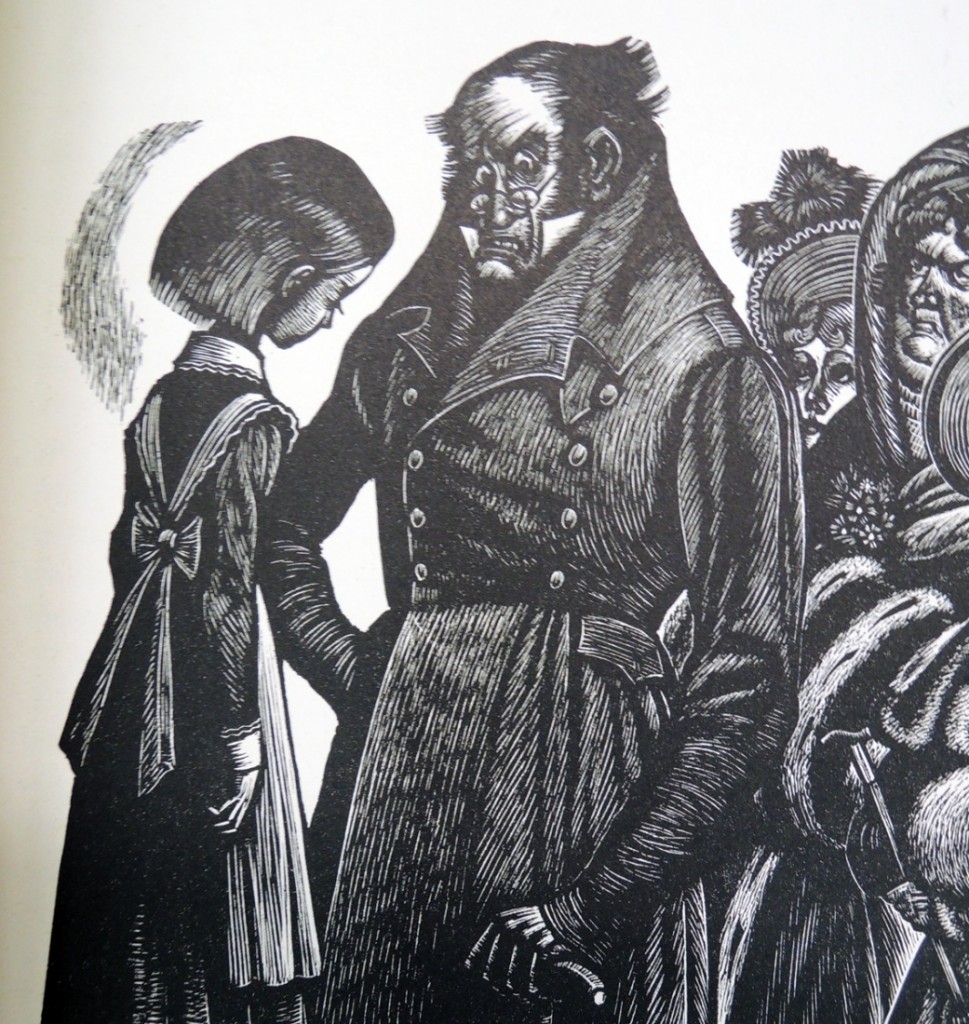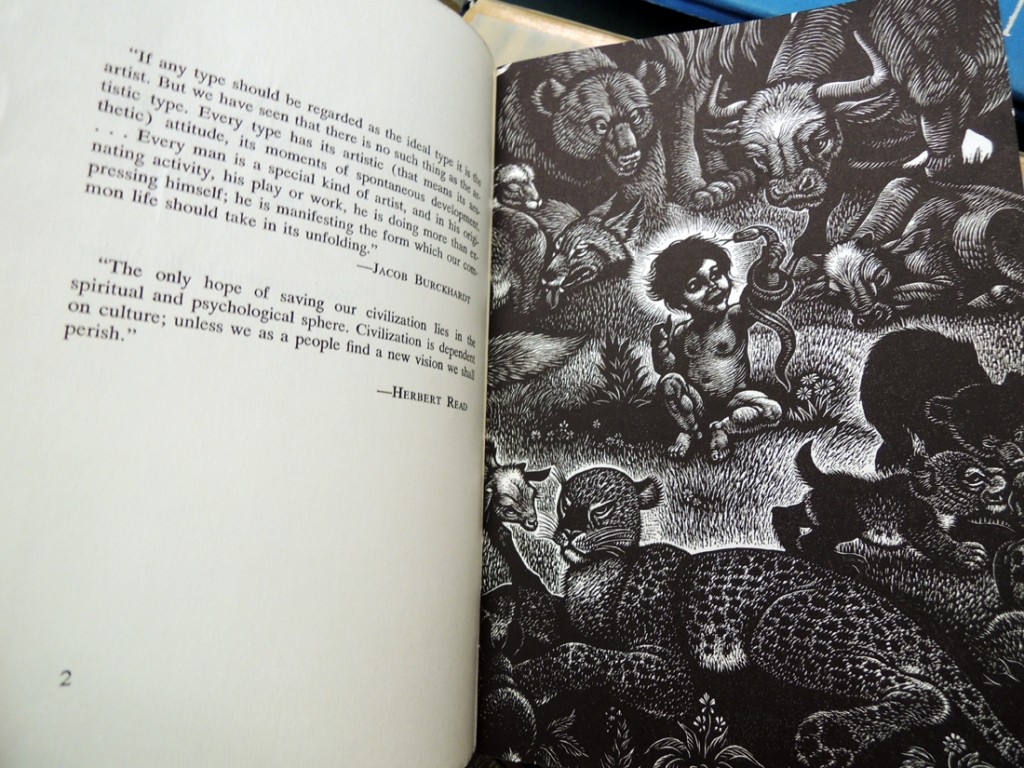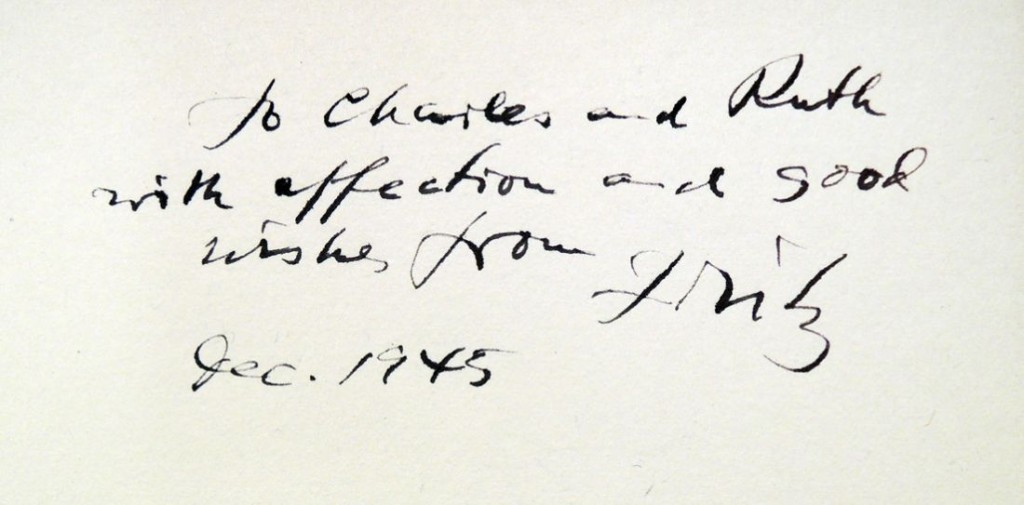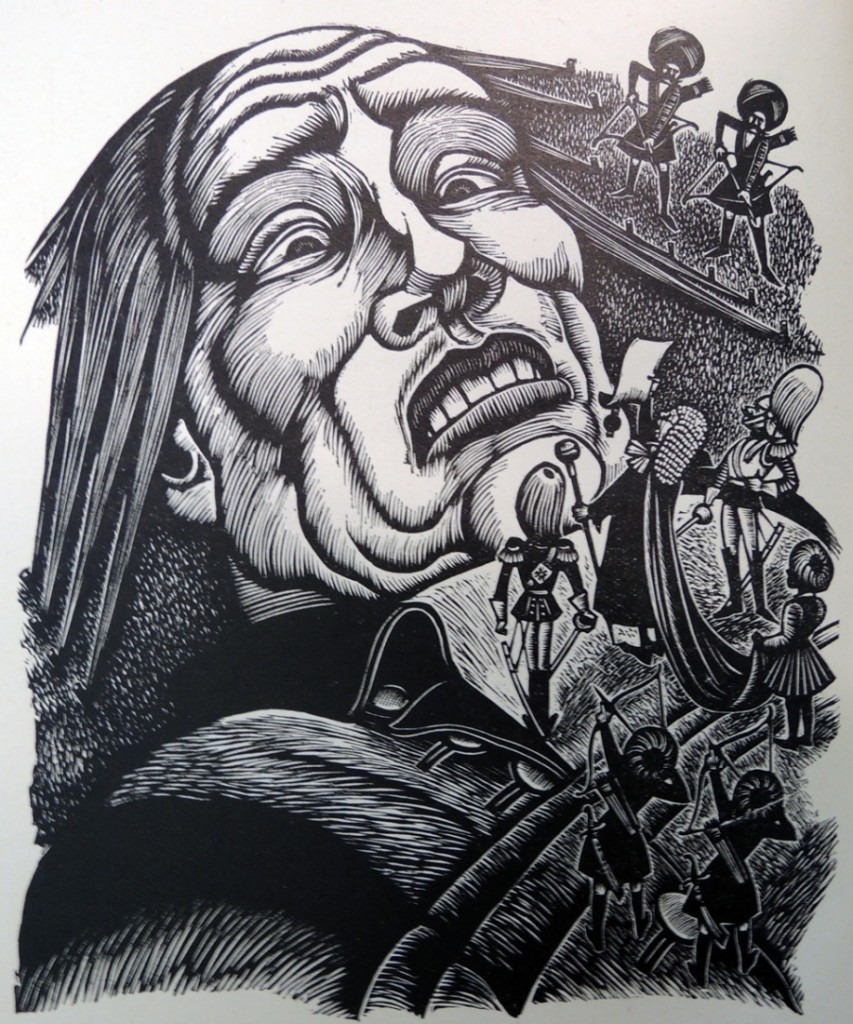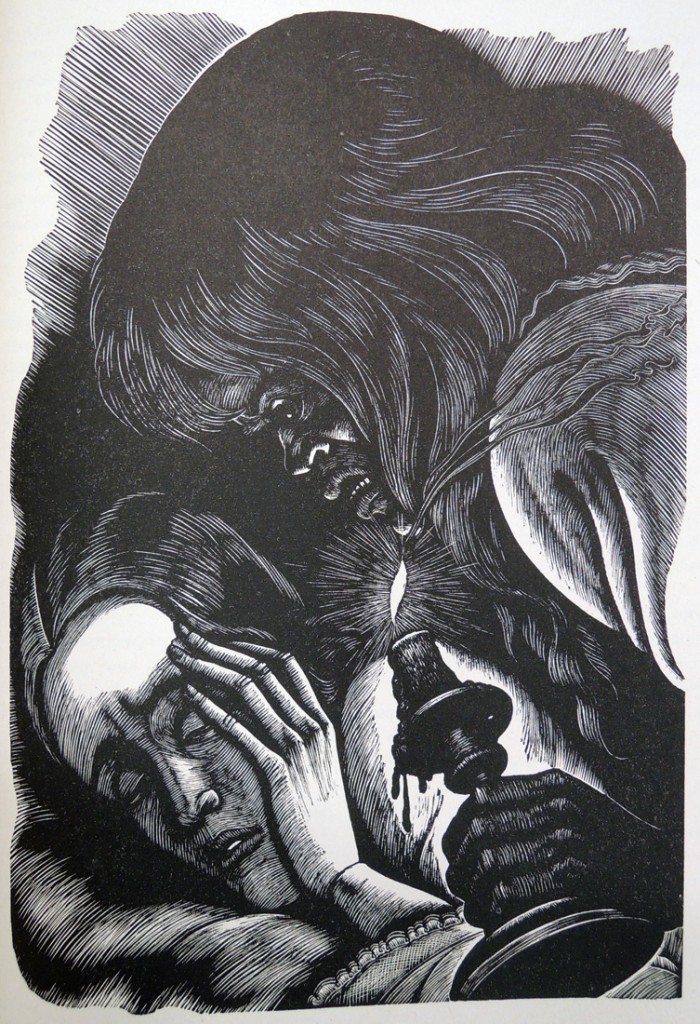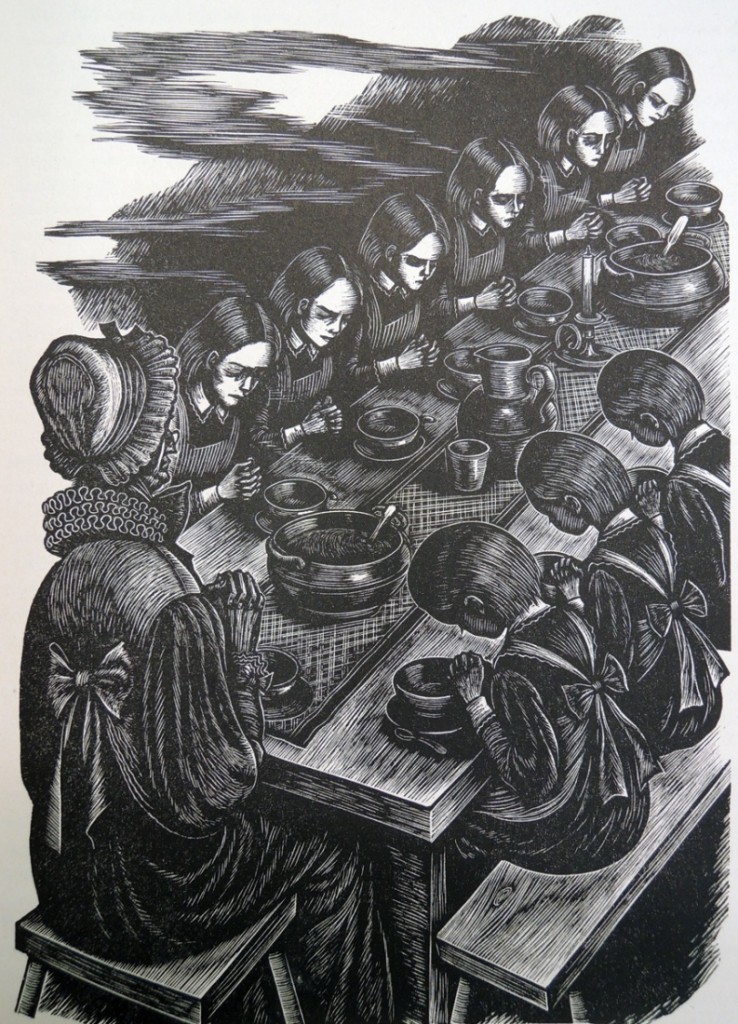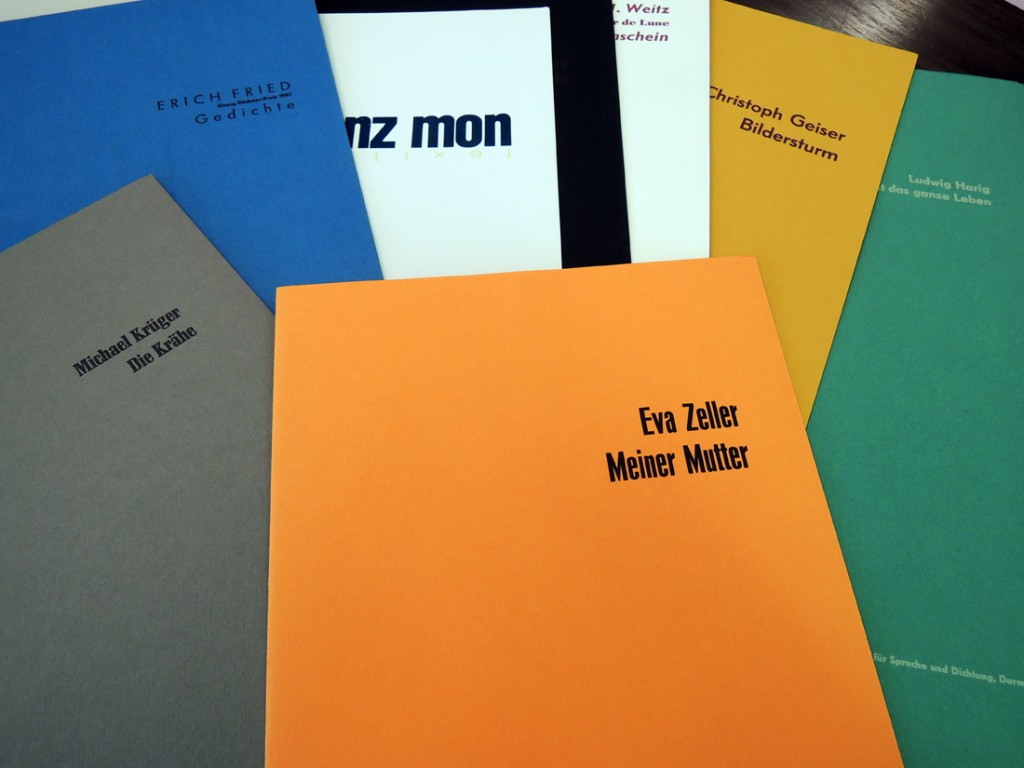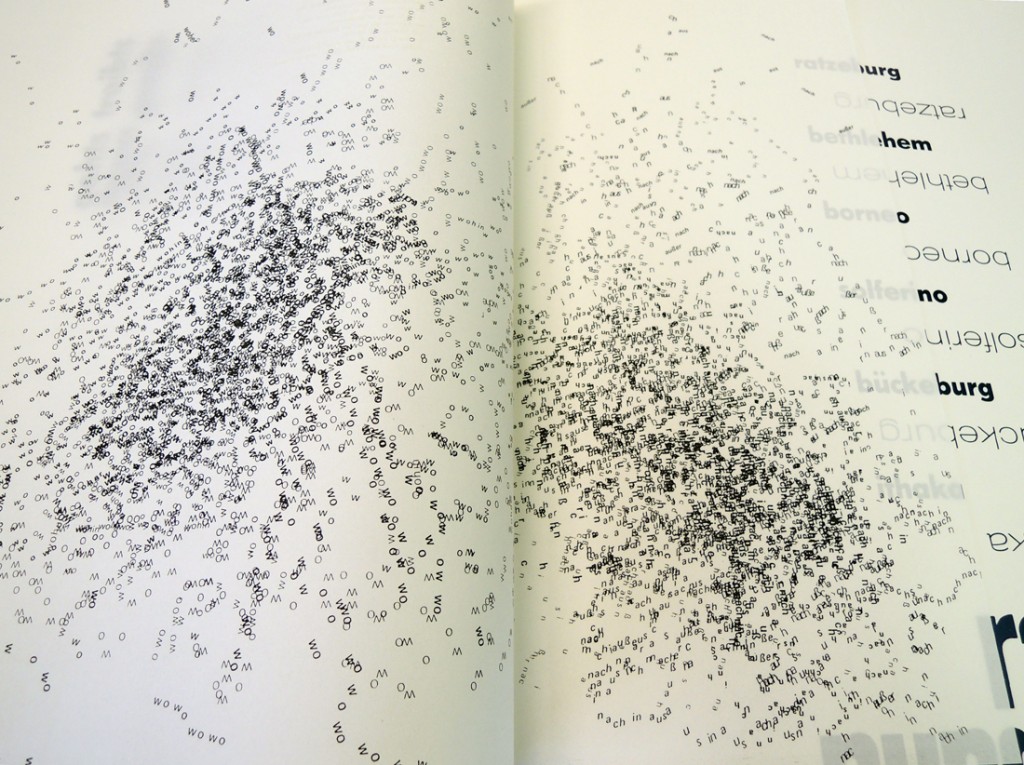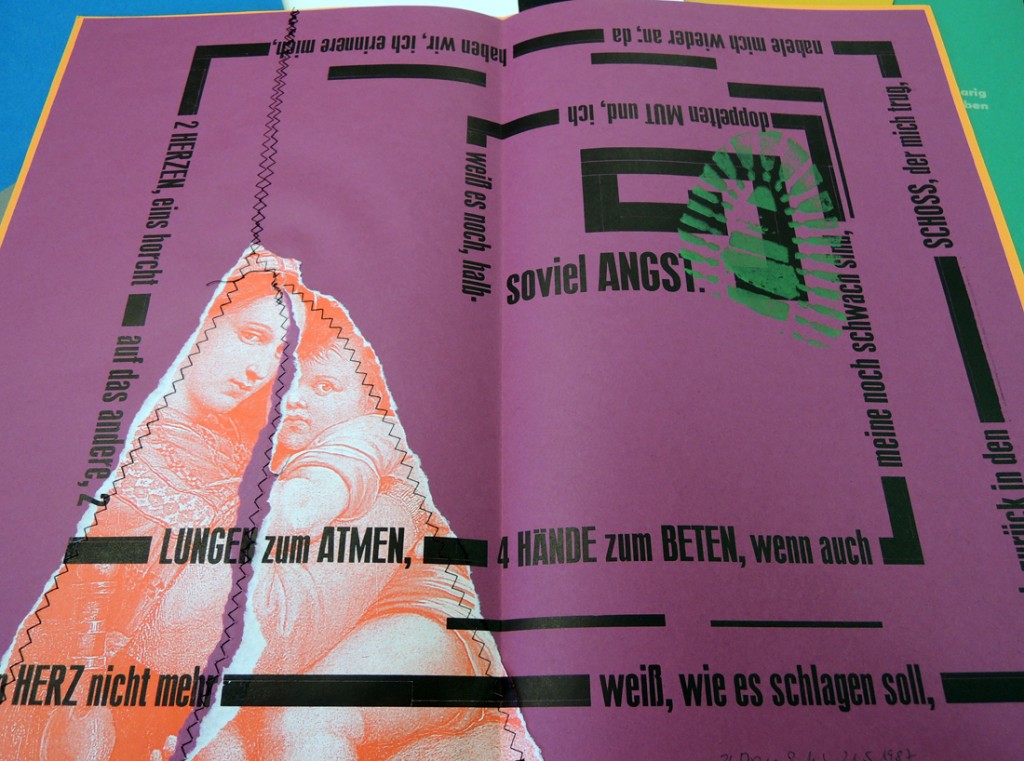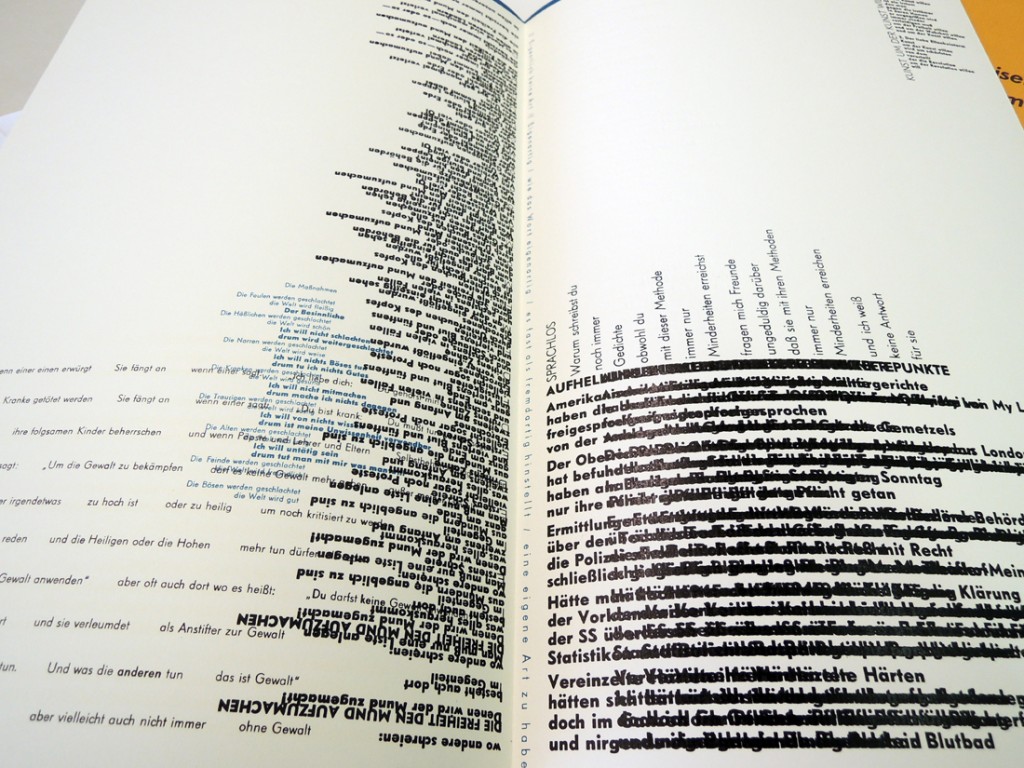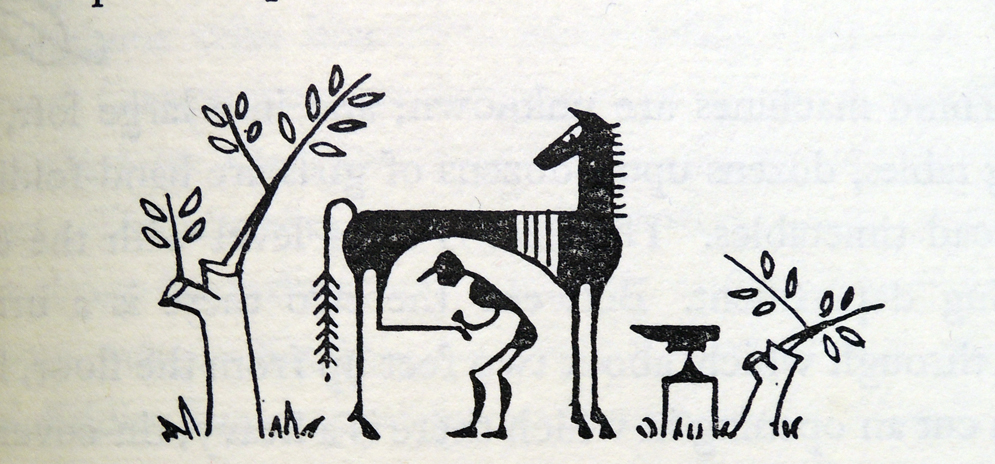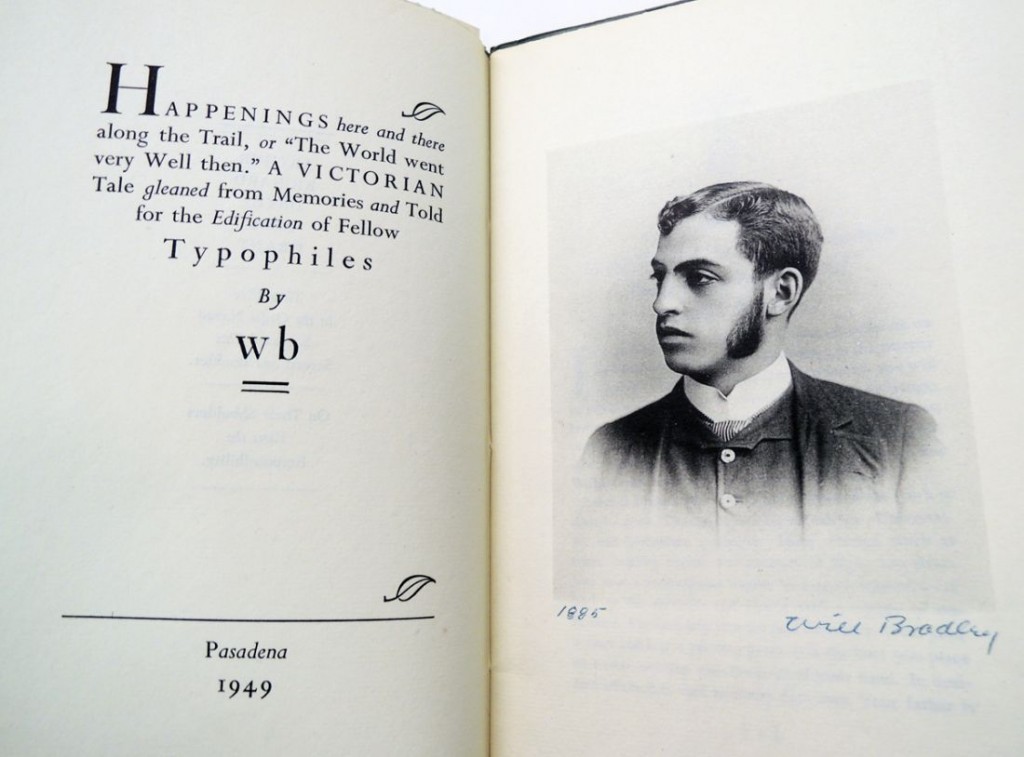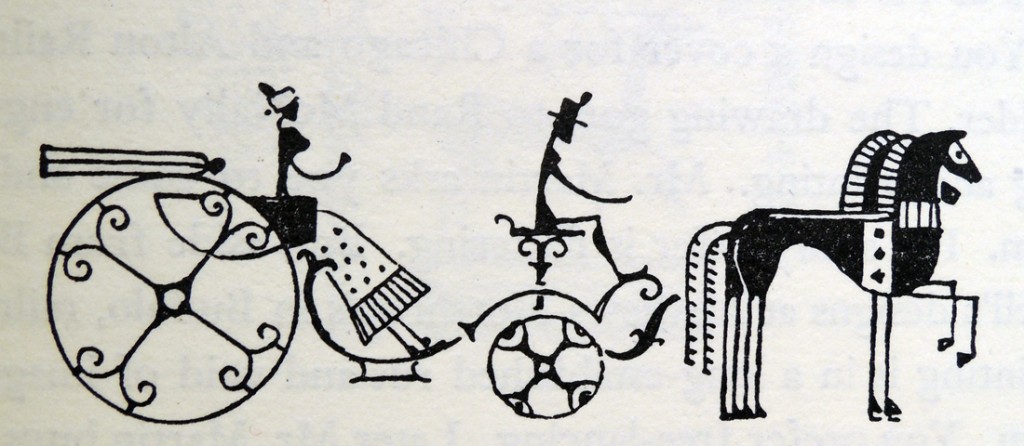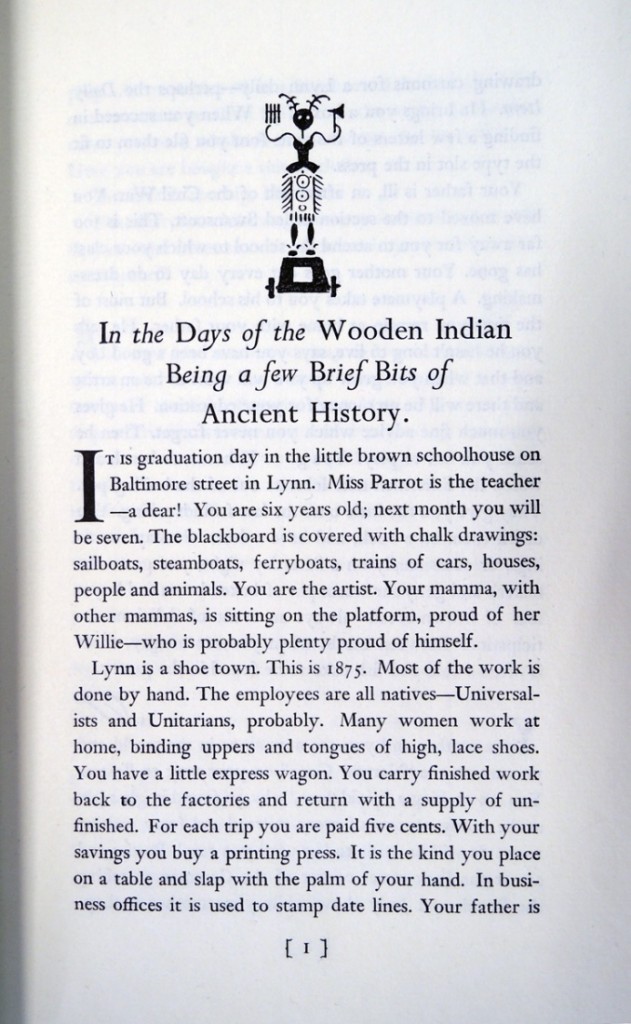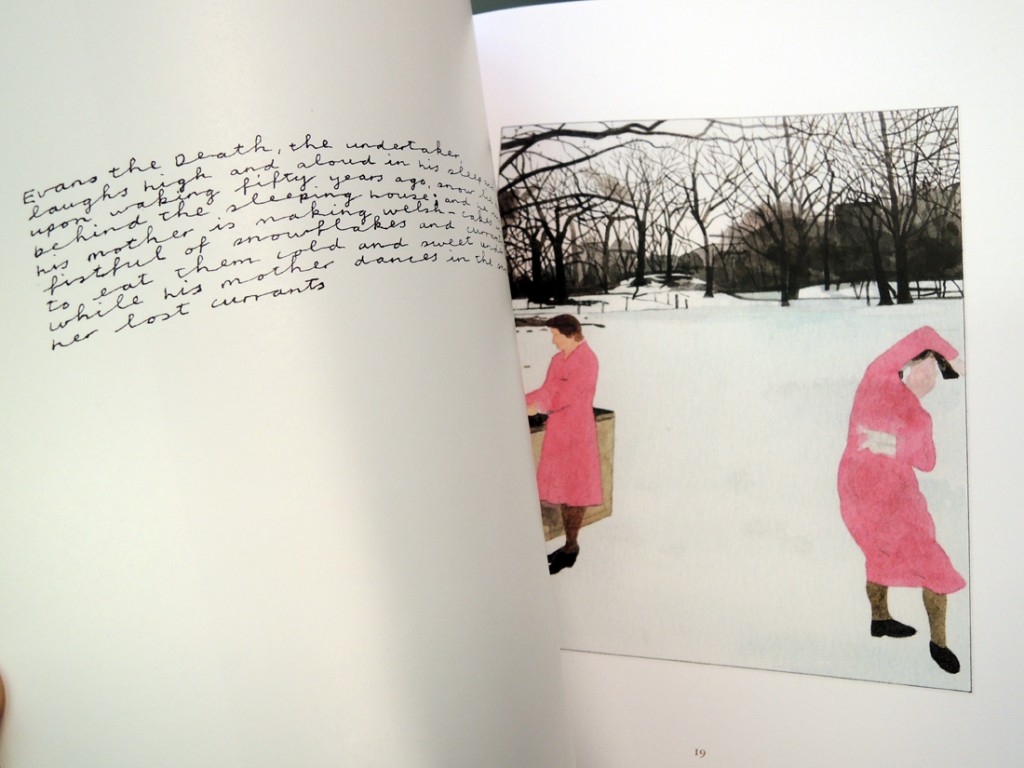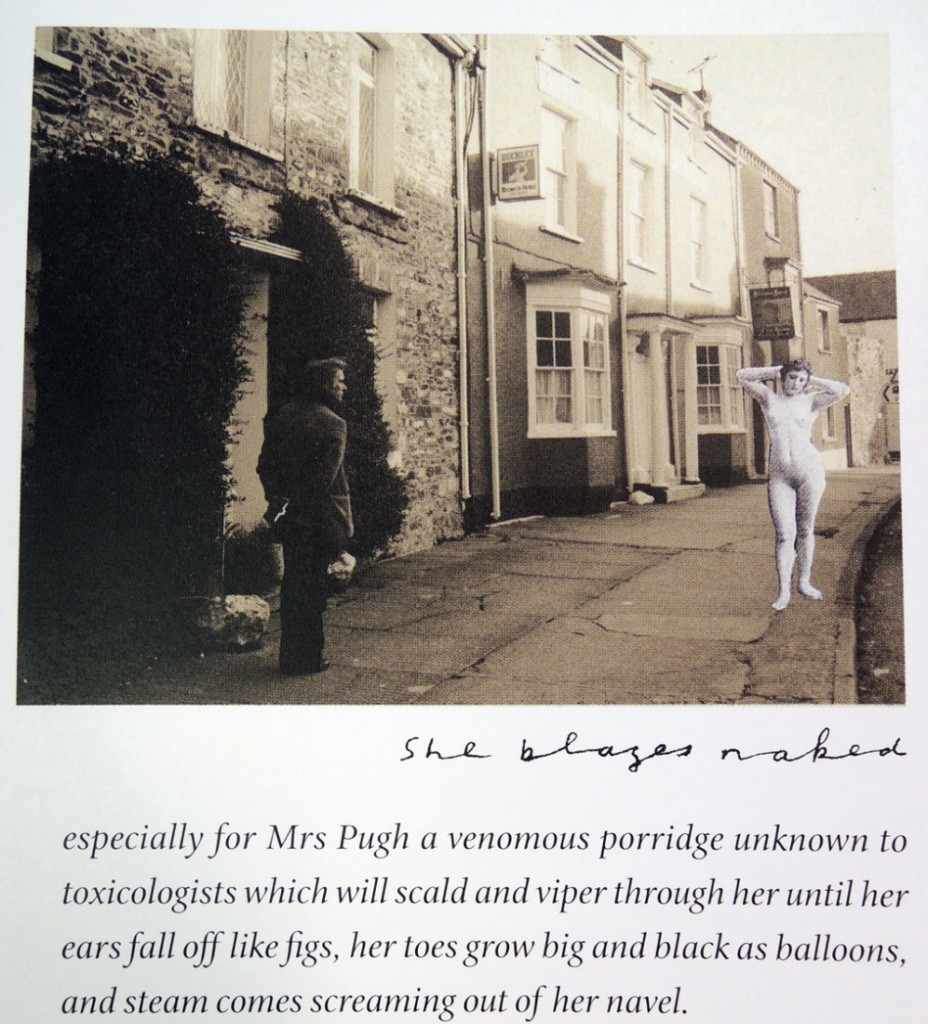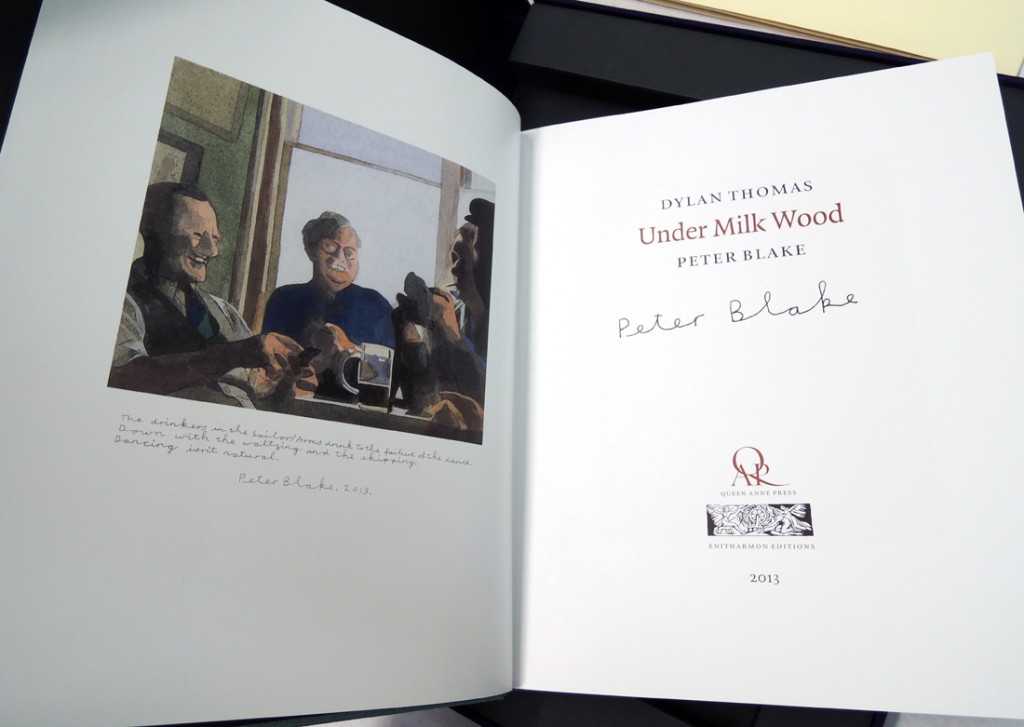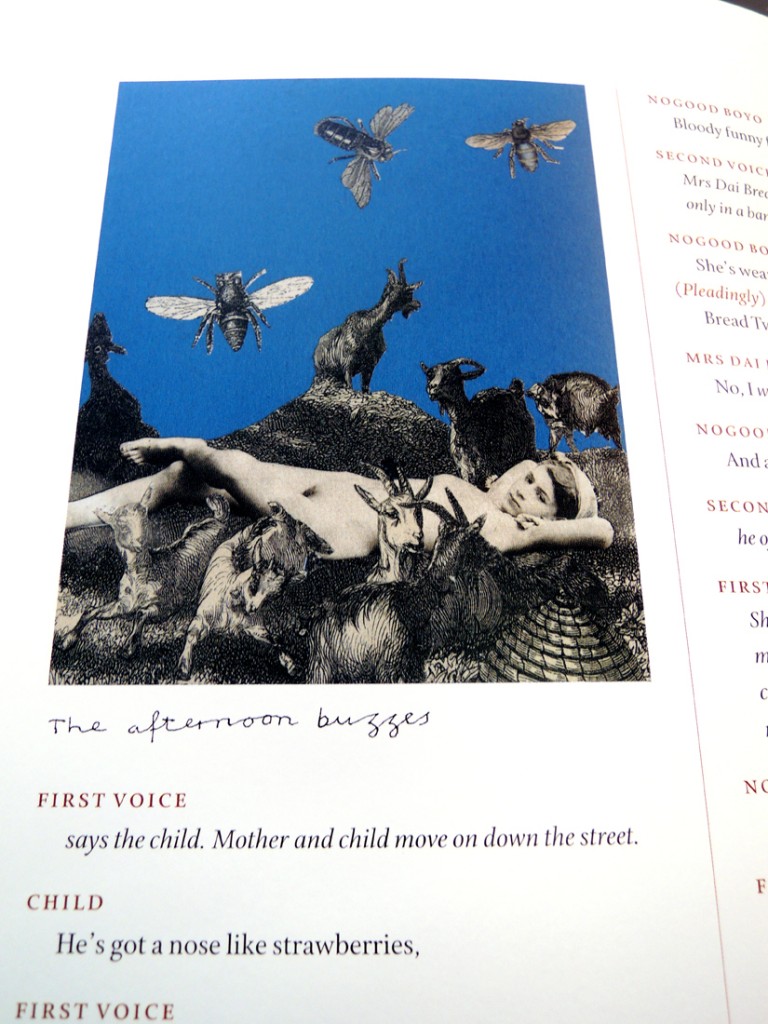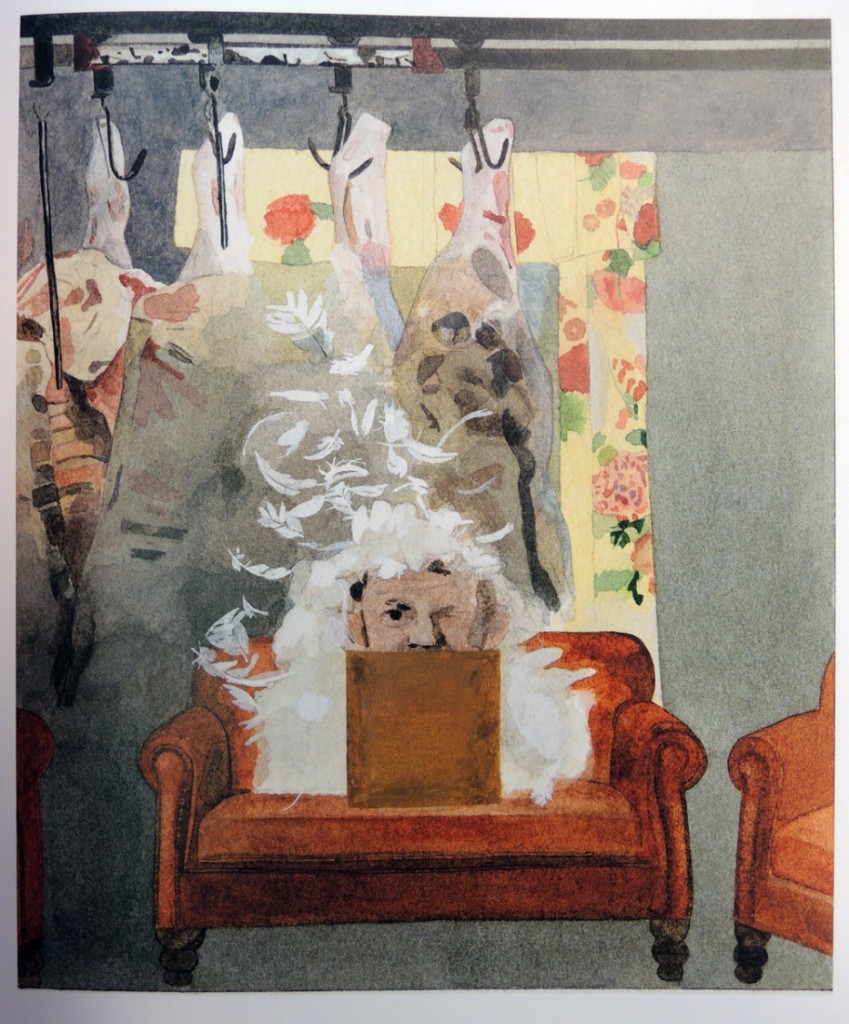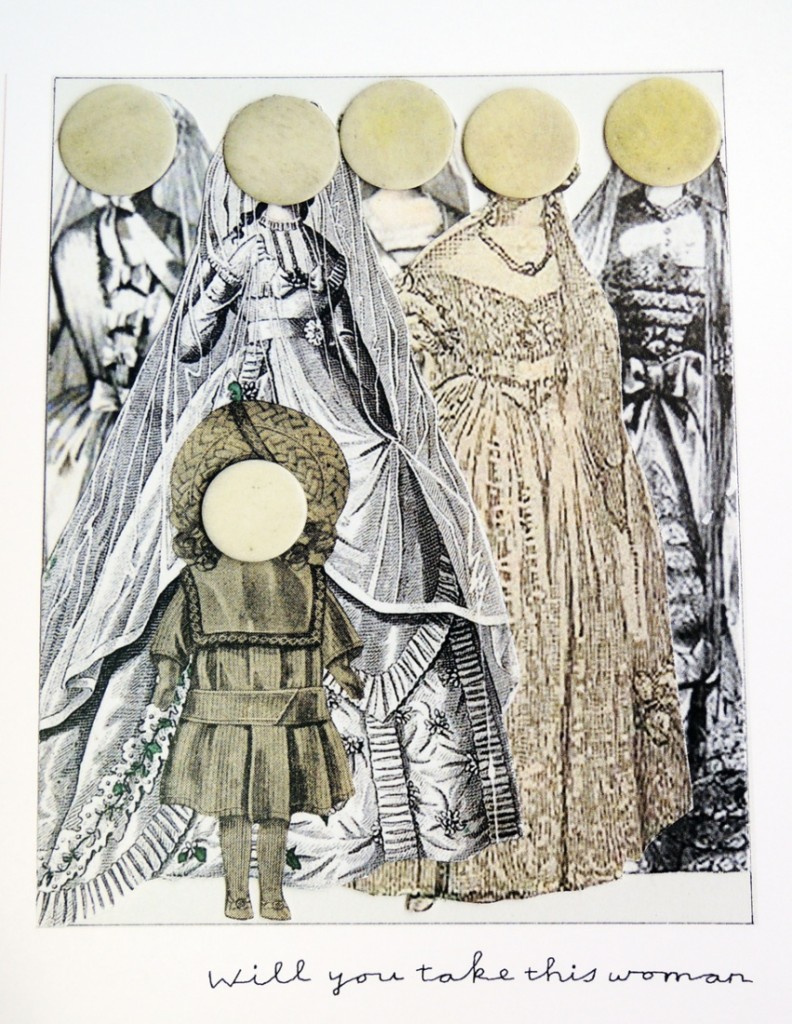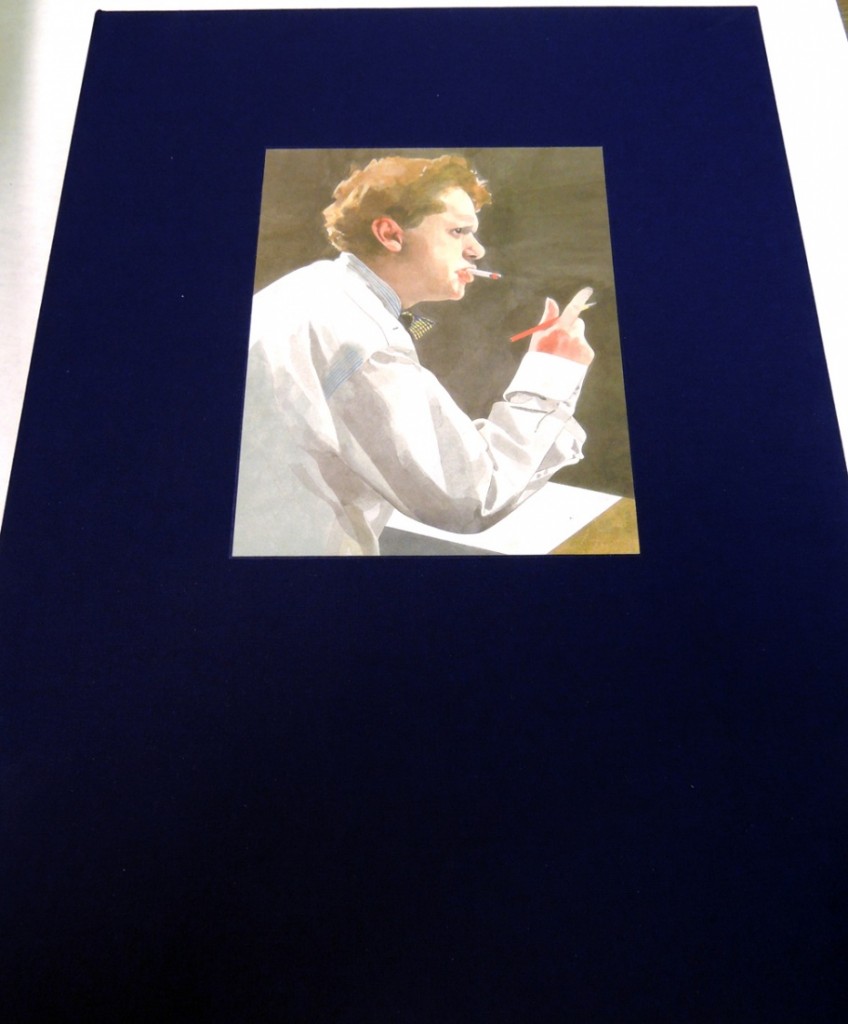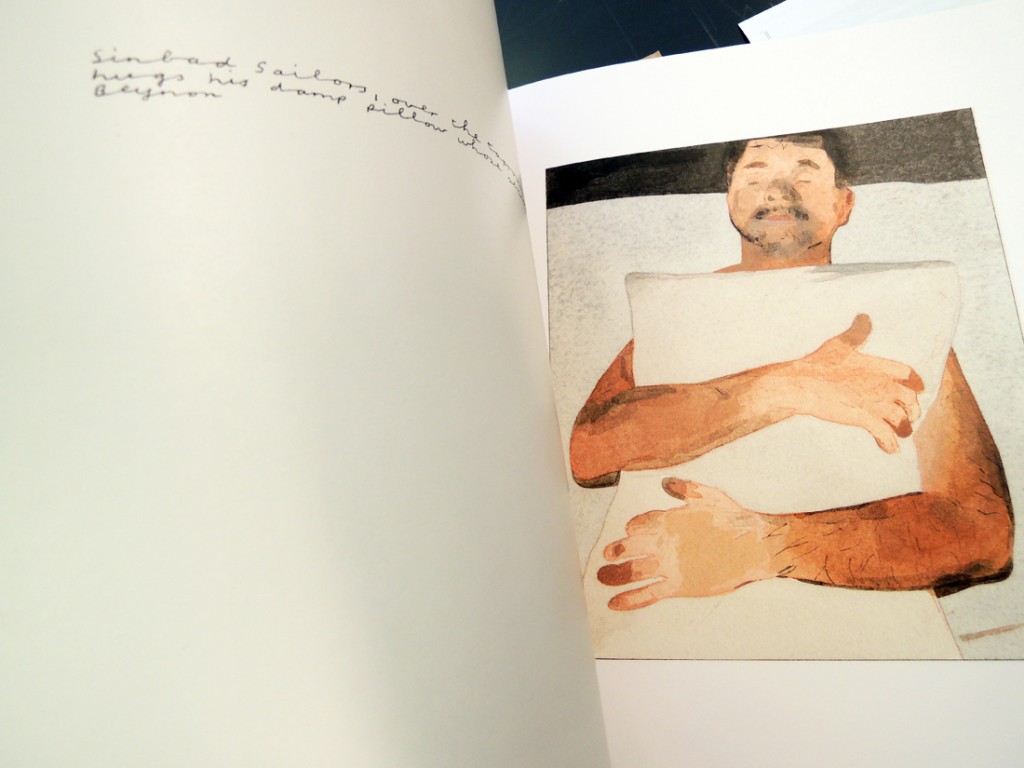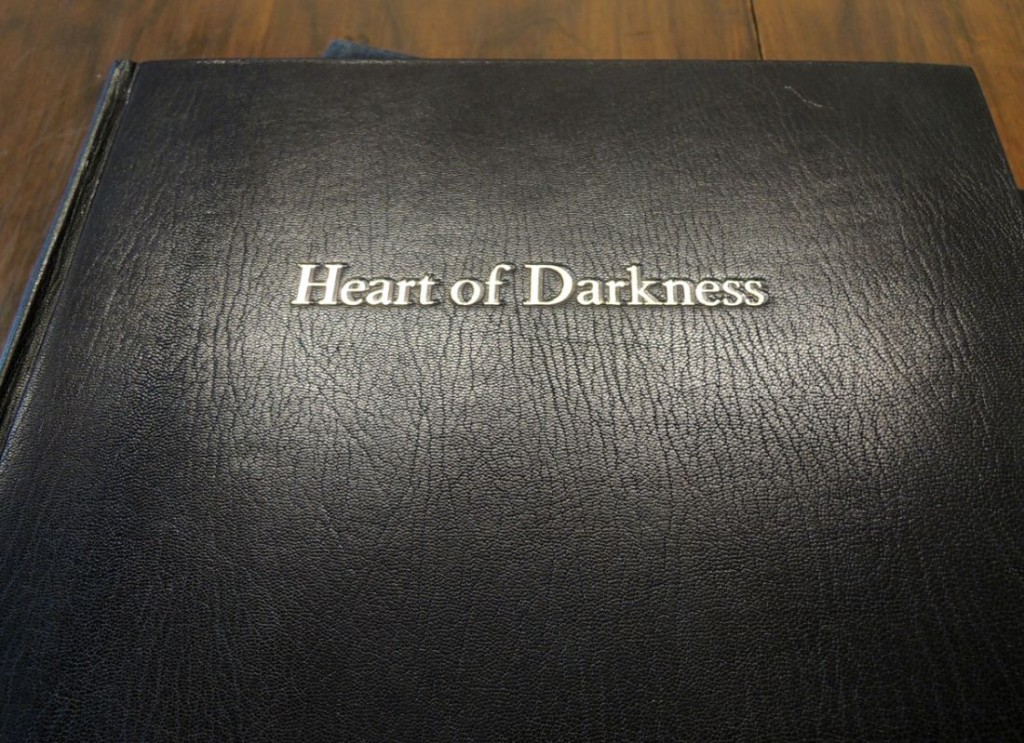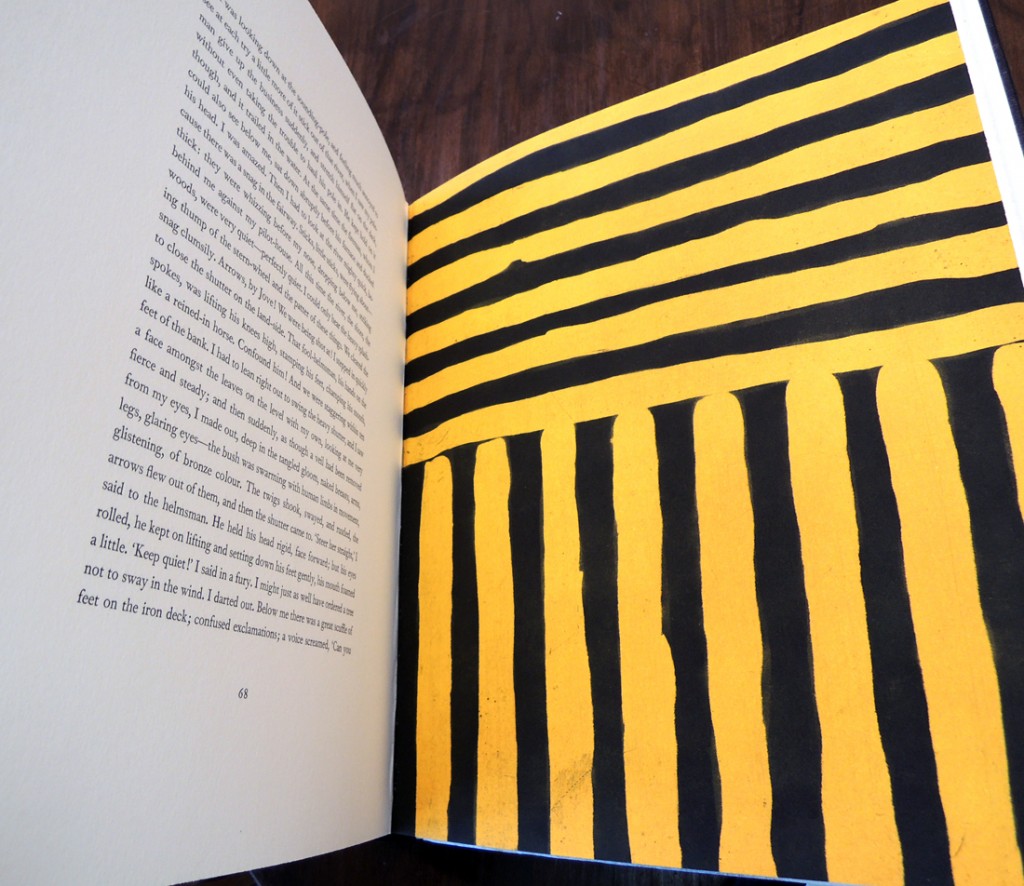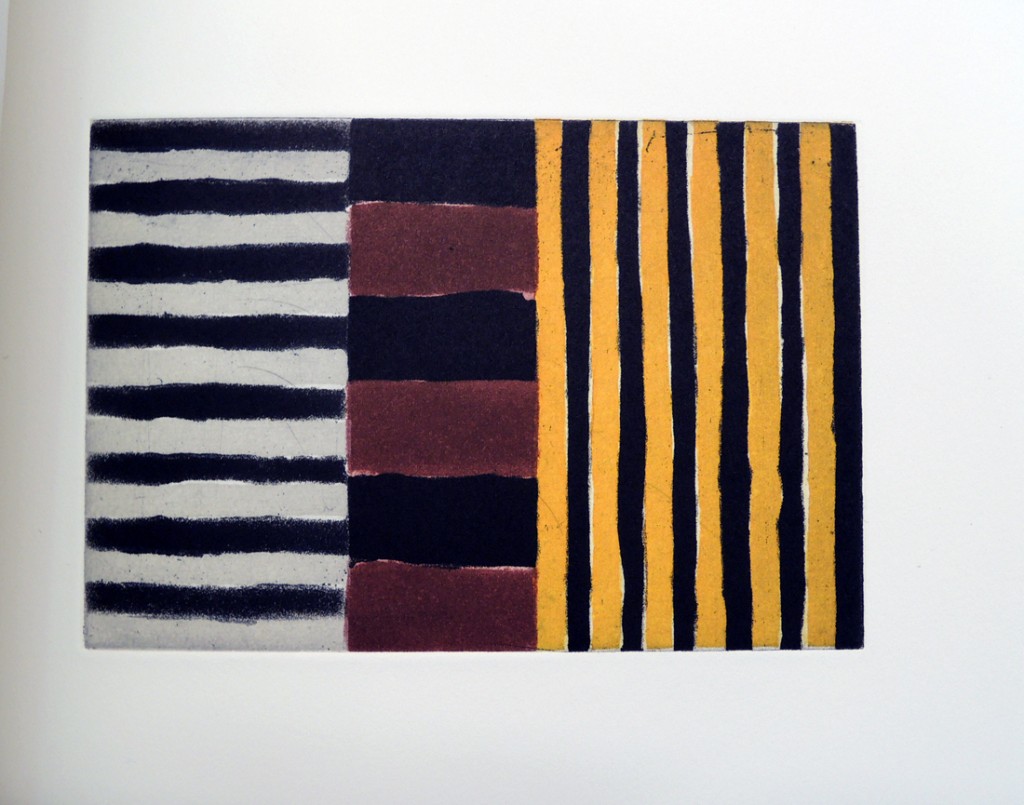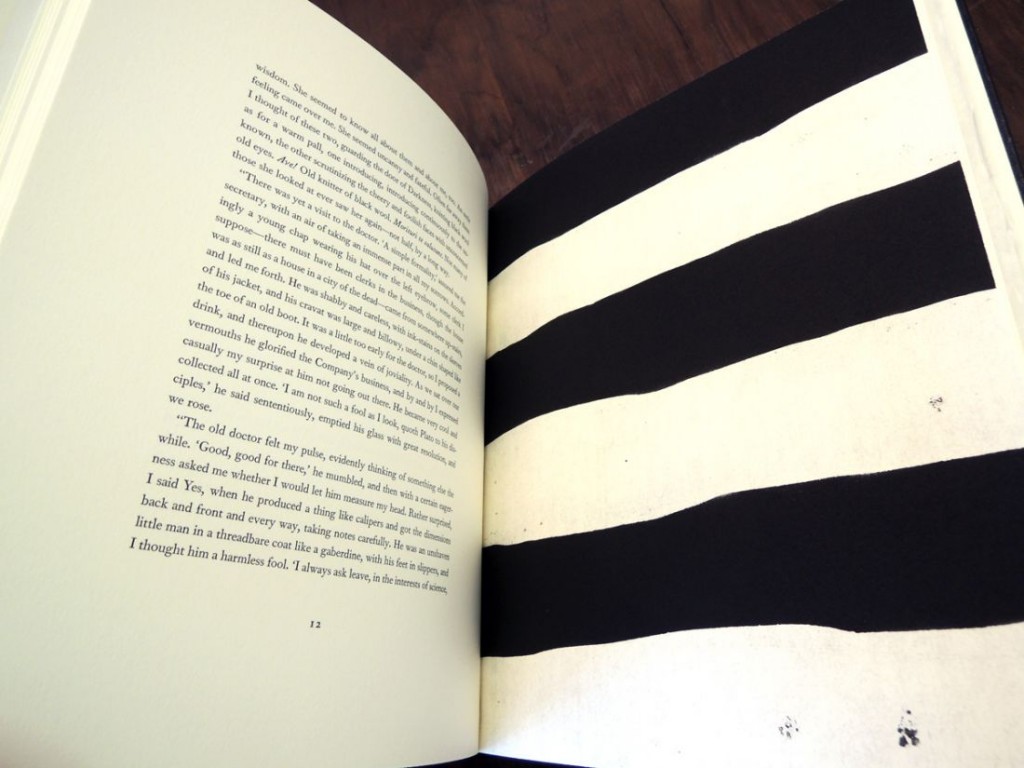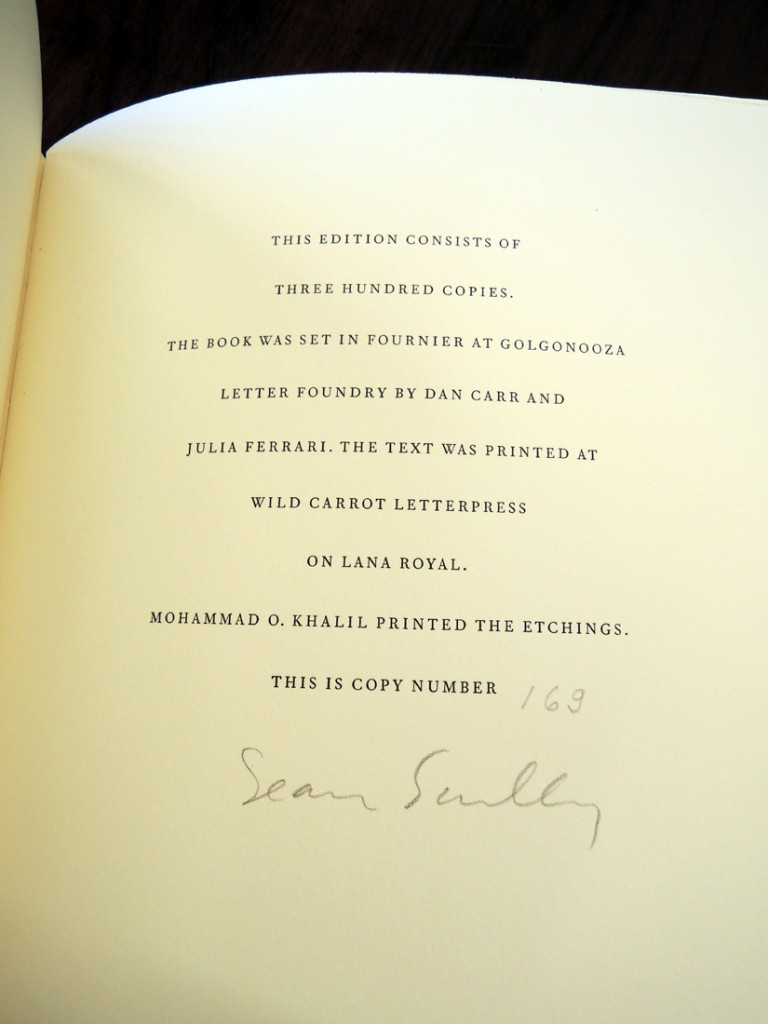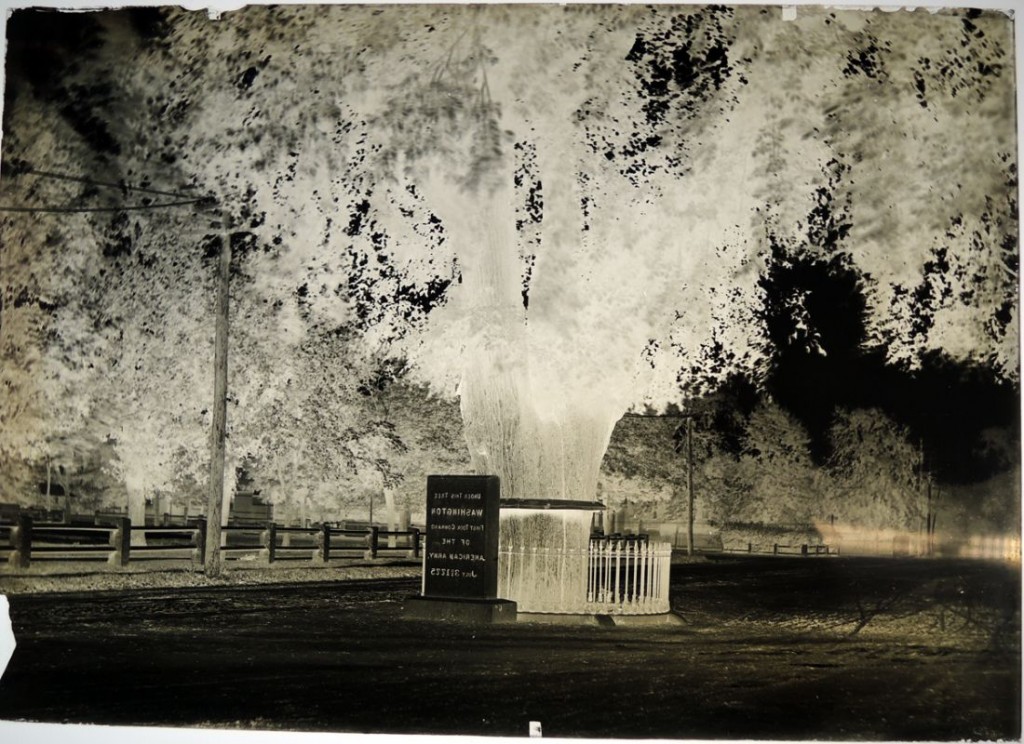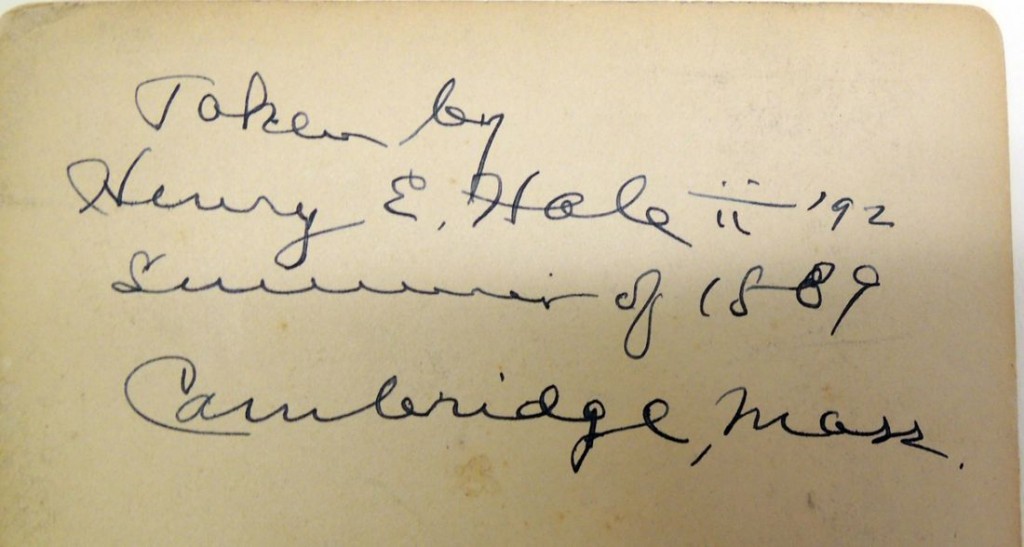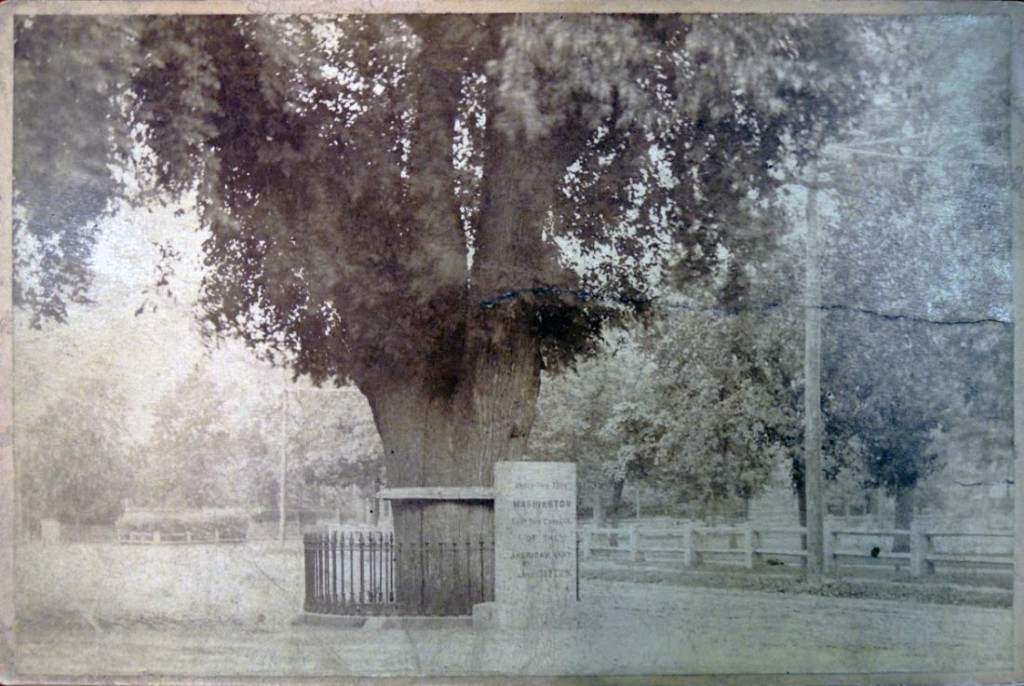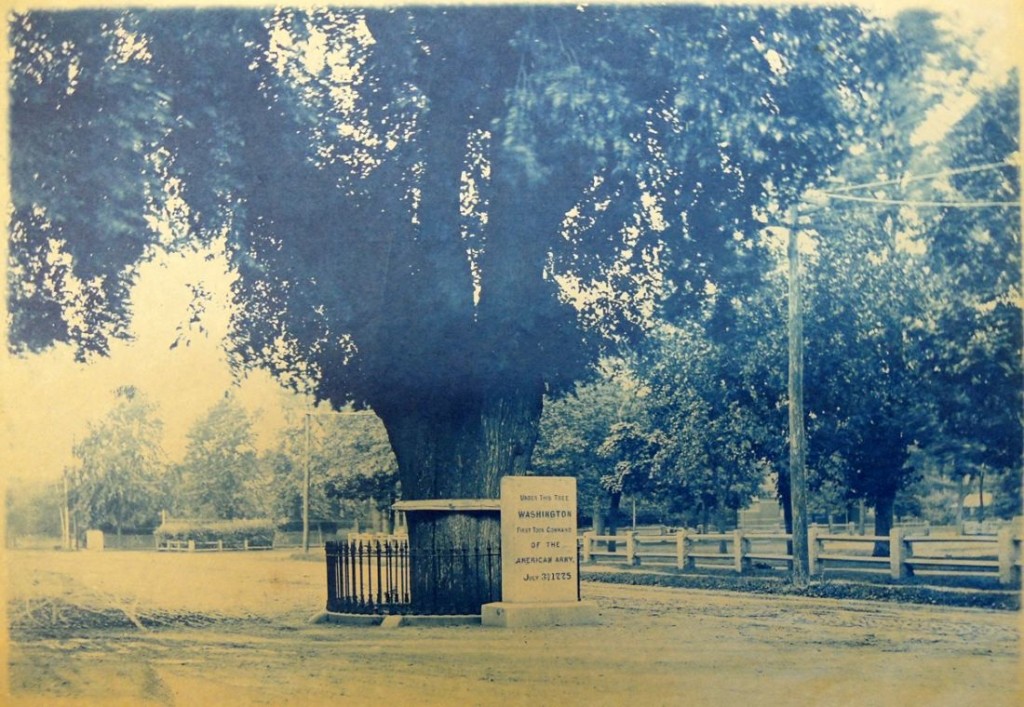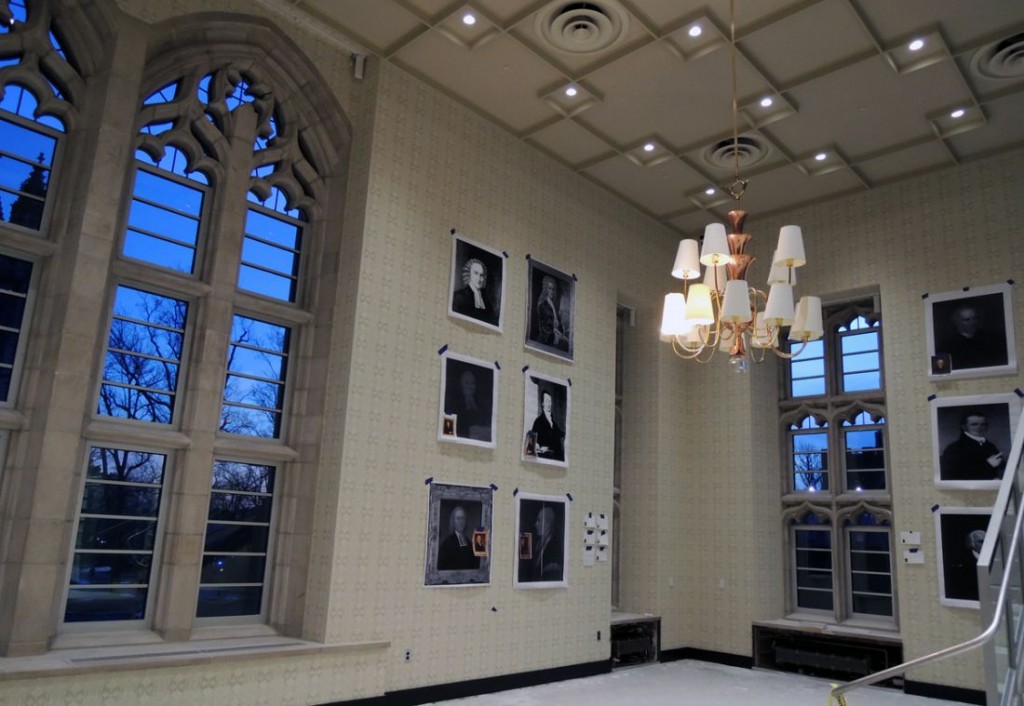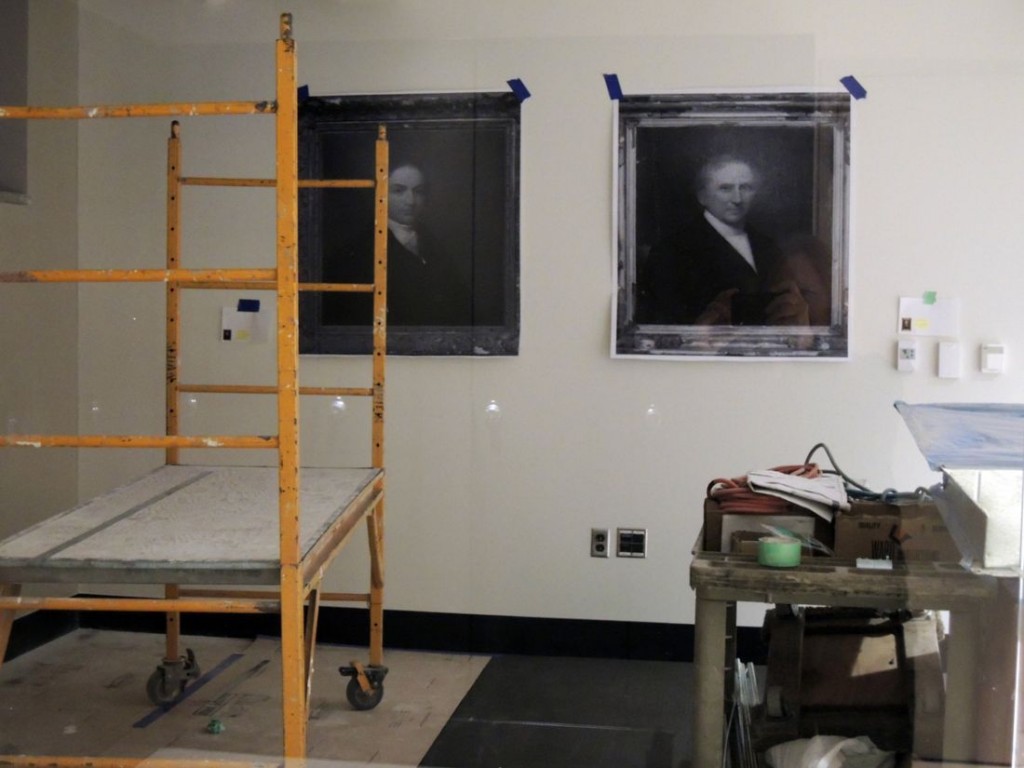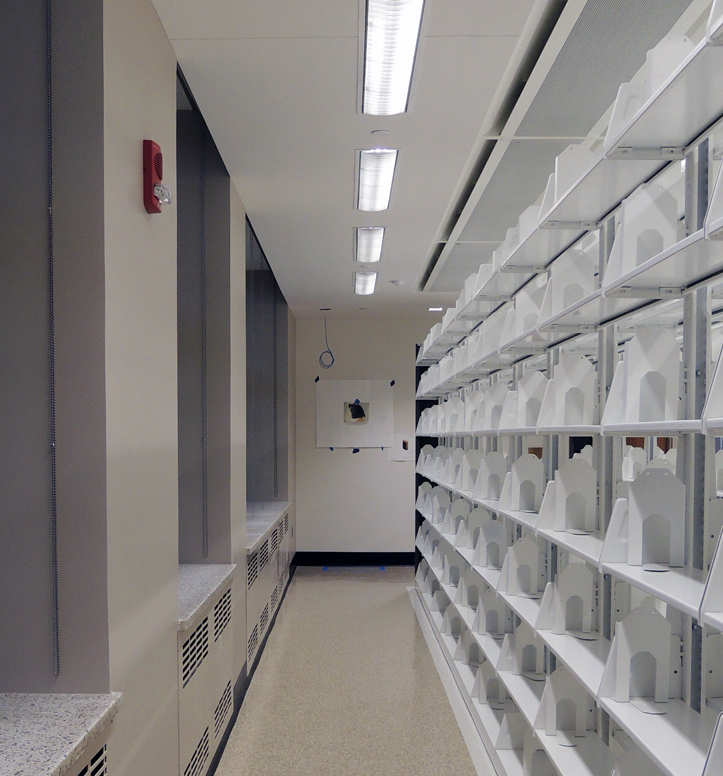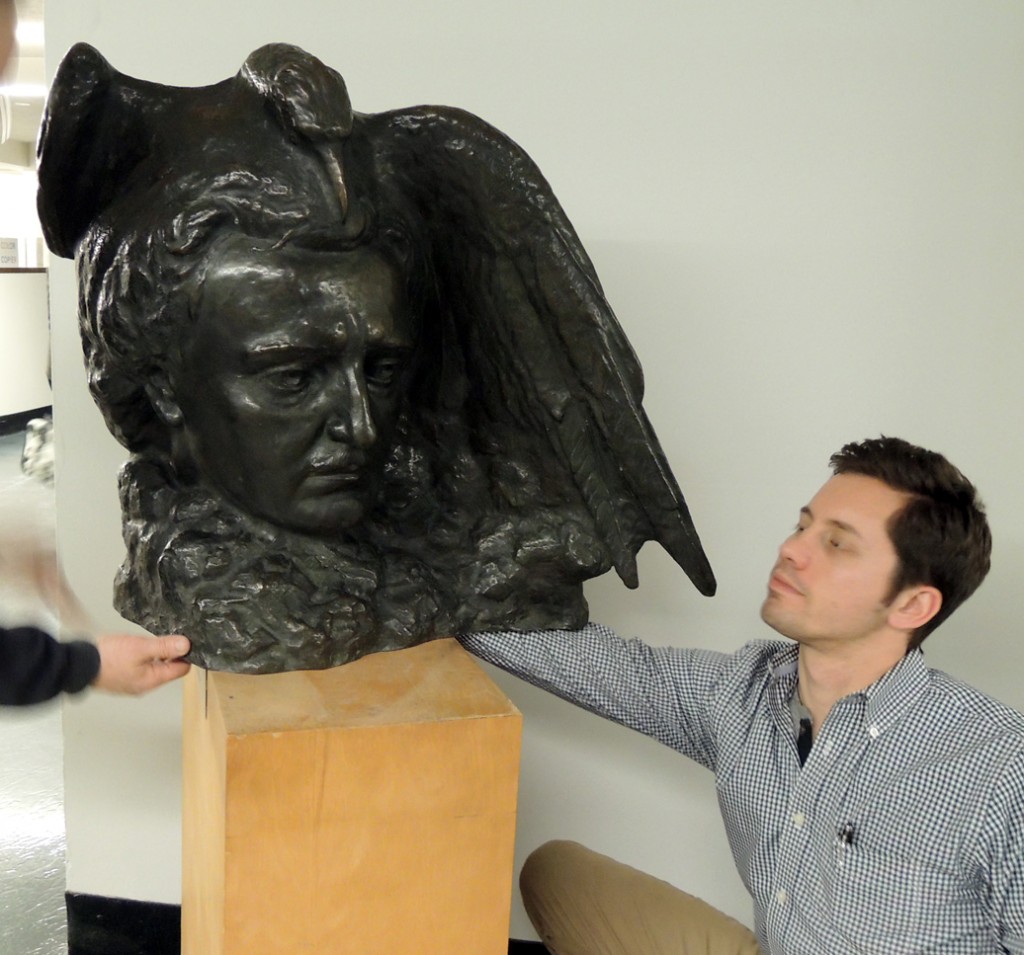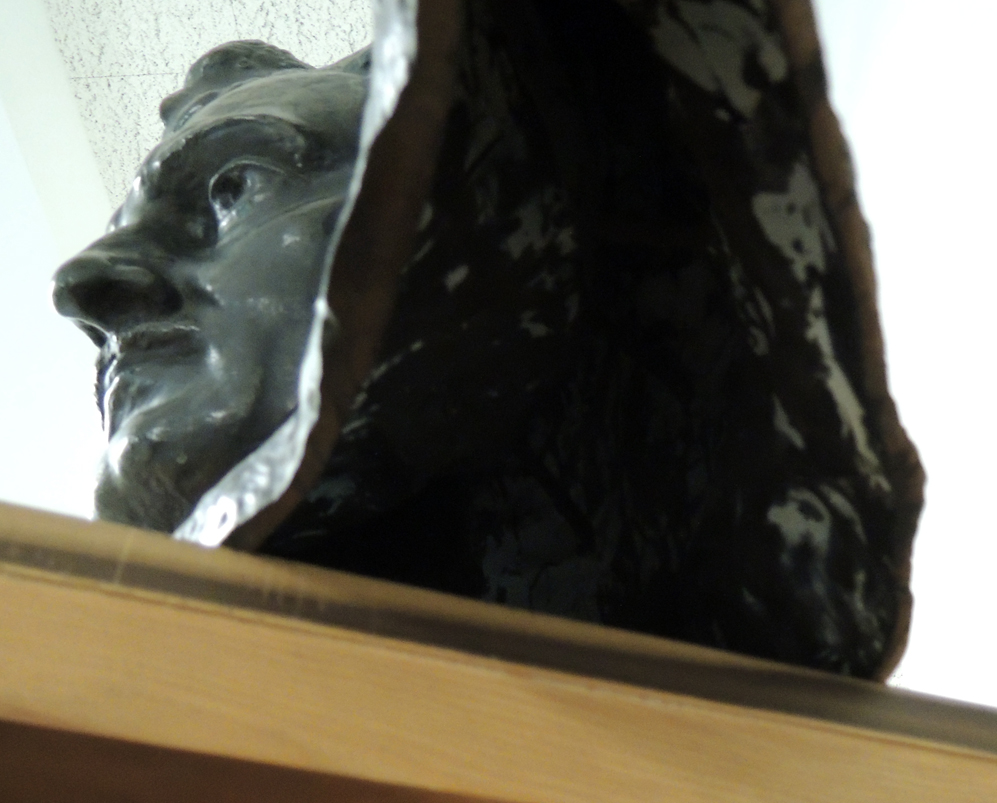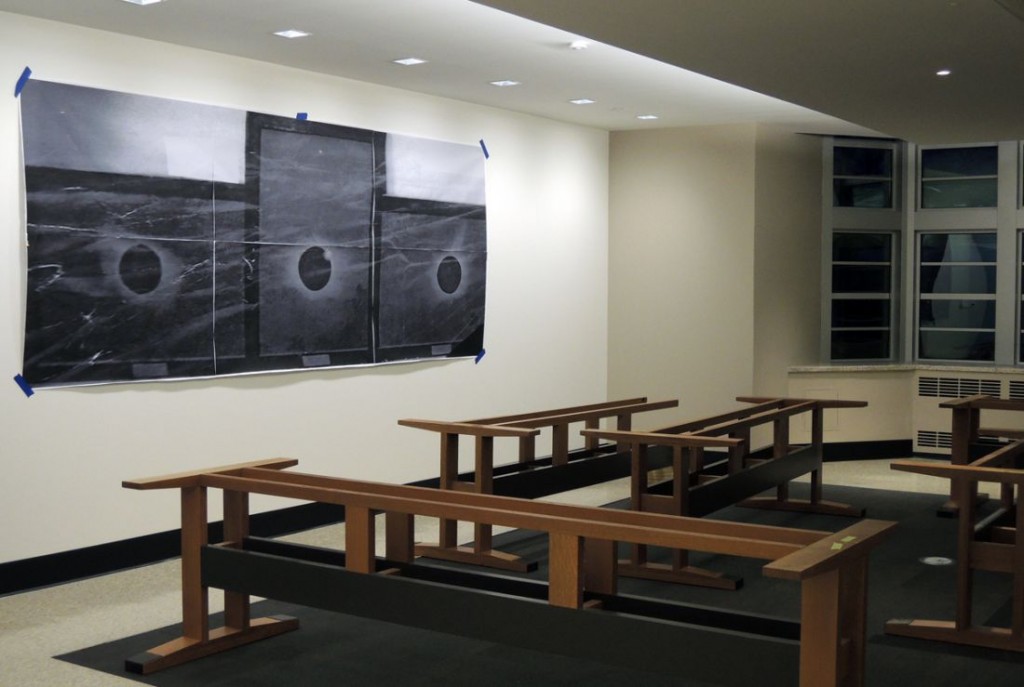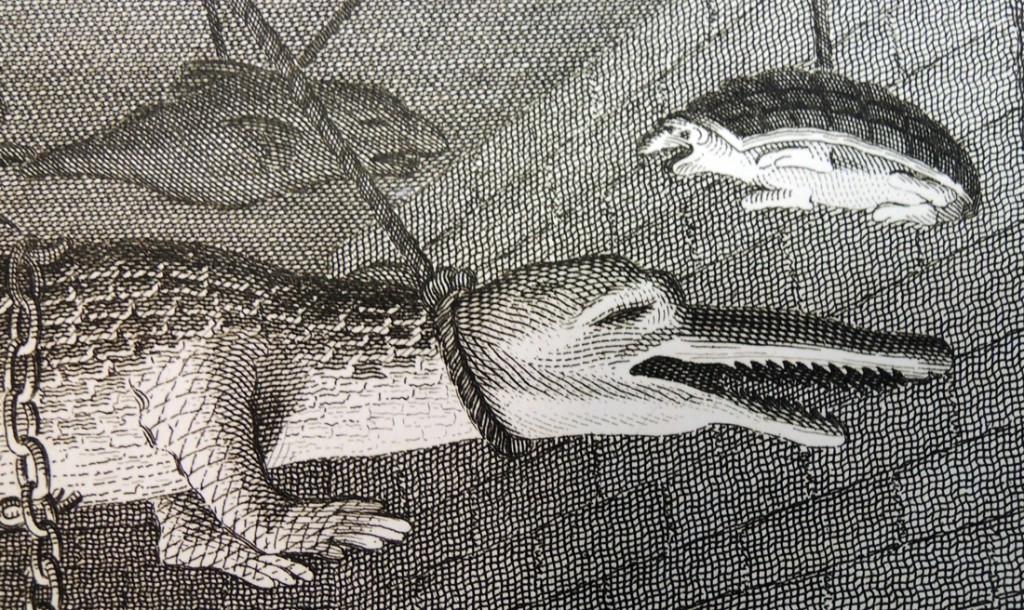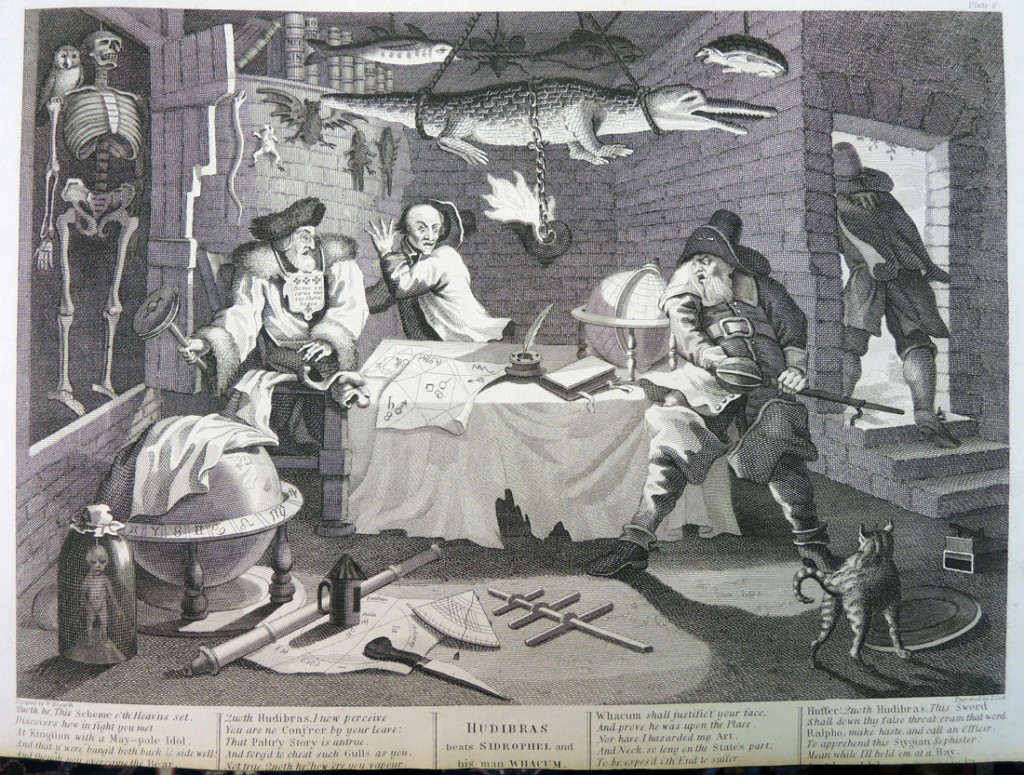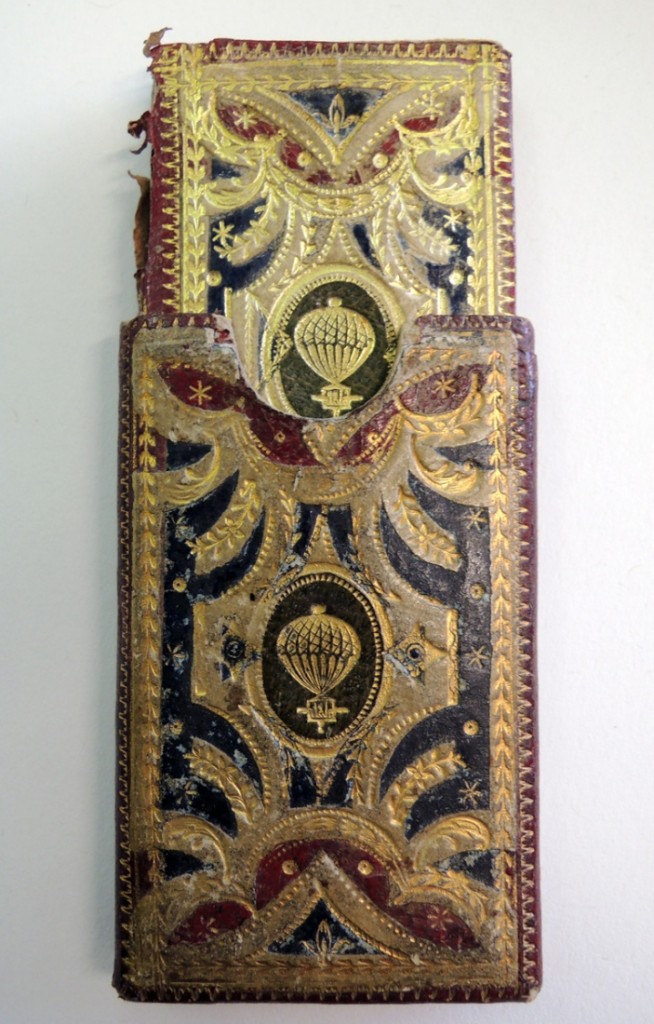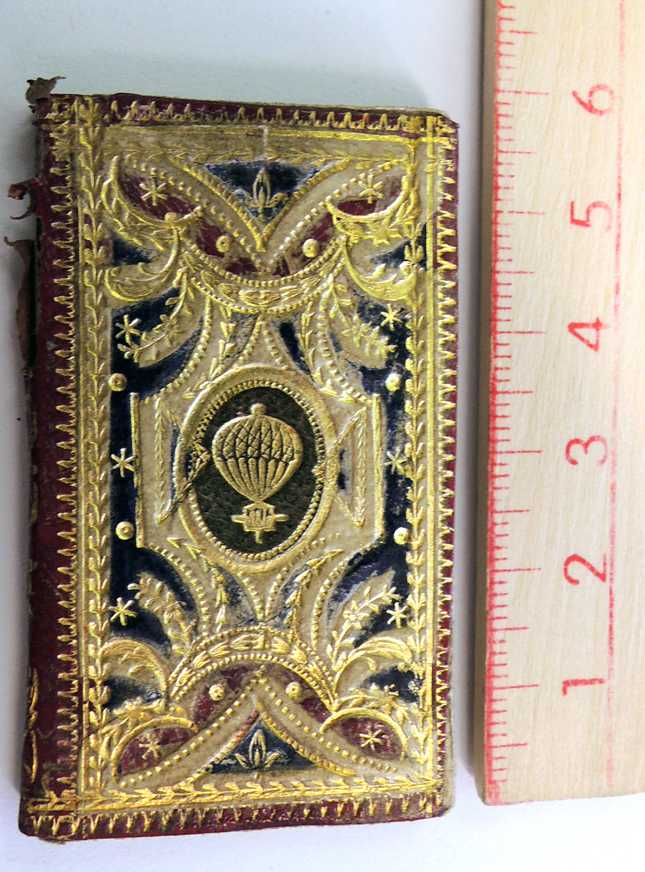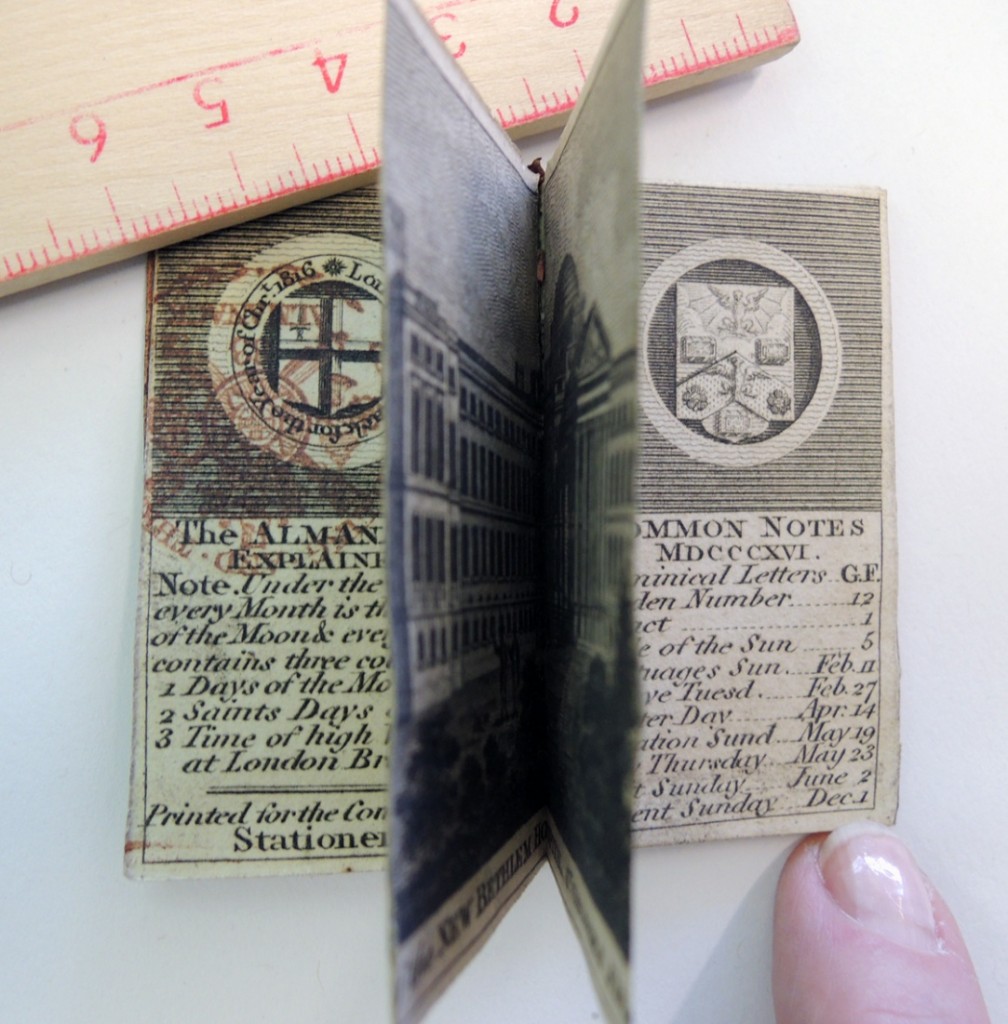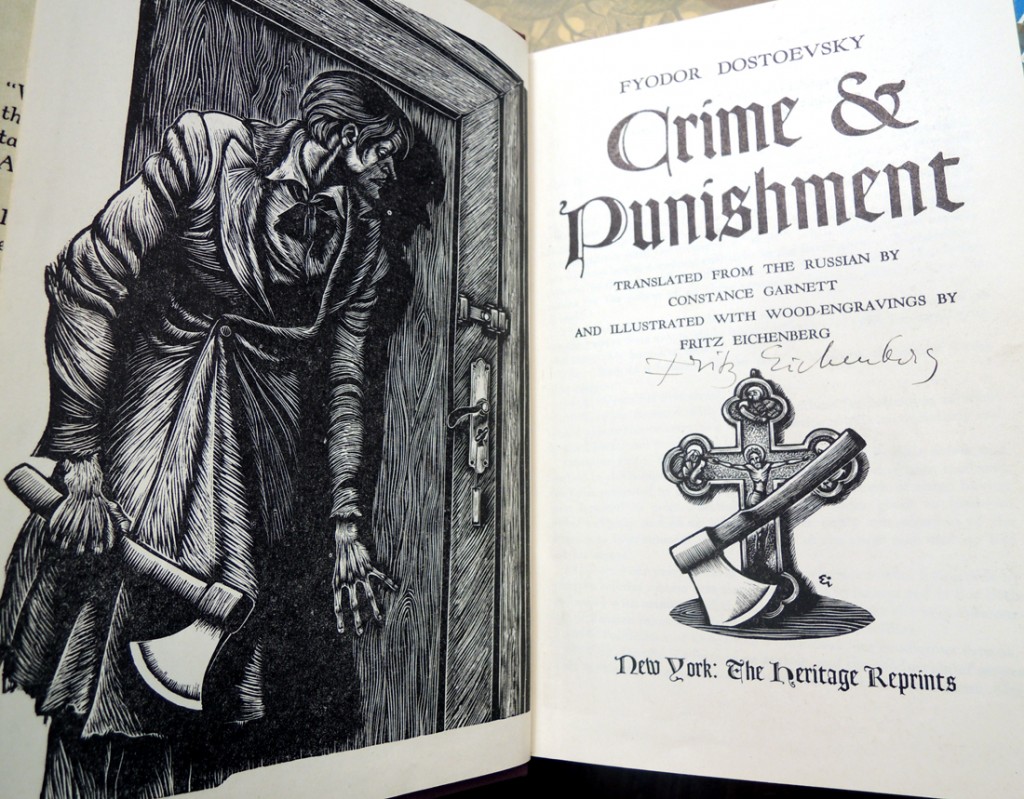
The Graphic Arts Collection is fortunate to have an extensive collection of prints by the artist and illustrator Fritz Eichenberg (1901-1990). Thanks to a gift of Charles A. Perera, class of 1926, we also have a number of the published books illustrated by Eichenberg. In a 1964 interview, conducted by Harlan Phillips for the Archives of American Art, the artist remembered how he began illustrating books.
“Well, I picked my teachers. I worked as an advertising artist in my early youth. I was eighteen or nineteen when I left Cologne, and I worked in a department store as a guy for everything – you know; I did posters and advertising. I was an apprentice in a lithographic print shop before I took on my first job. … I [studied] with Hugo Steinerpark who was a well known illustrator and perhaps overrated, if you think of him now. At the time he gave me a feeling that this was the right man for me. He was not only interested in the illustration, but in the book as a whole – the design, the binding, the type – the illustrations were just a part of his work. He was the head designer for Ulstein Books, which are still beautiful. He did most of the bindings, and they were just marvelous. I studied under him and became almost immediately one of his master students; that meant that I had the privilege of having a studio by myself under the roof of the academy. … Leipzig was the center of the book publishing world really at the time, which it isn’t any more. I had a marvelous time working more or less by myself for myself. I began to illustrate books right away. I did Gulliver’s Travels and Dostoevski, whom I always adored as an author. The first book was Crime and Punishment, and I did it while I was a student.”

